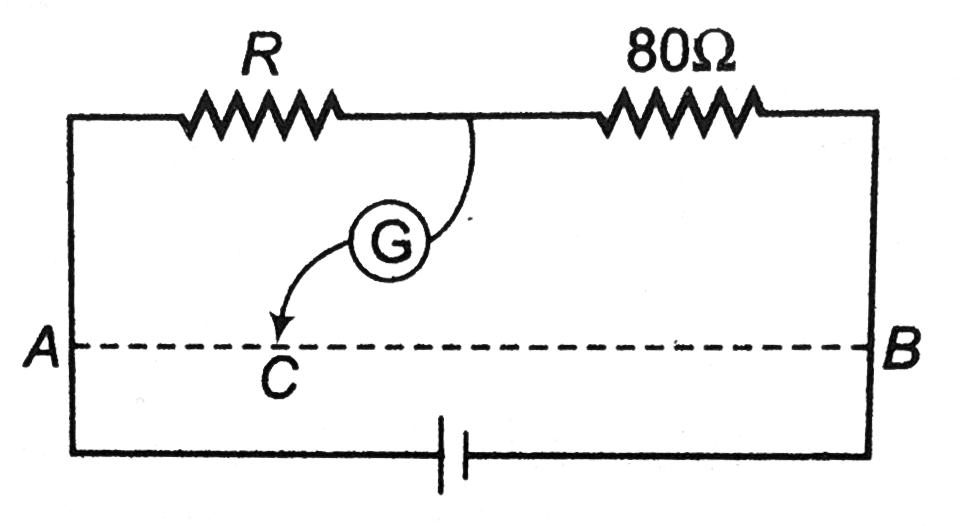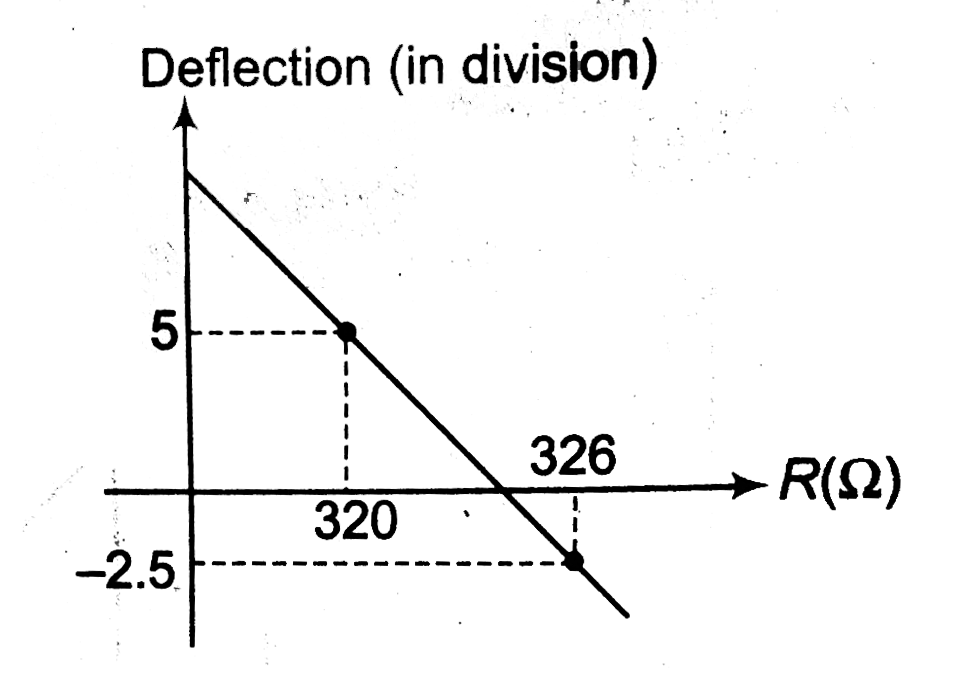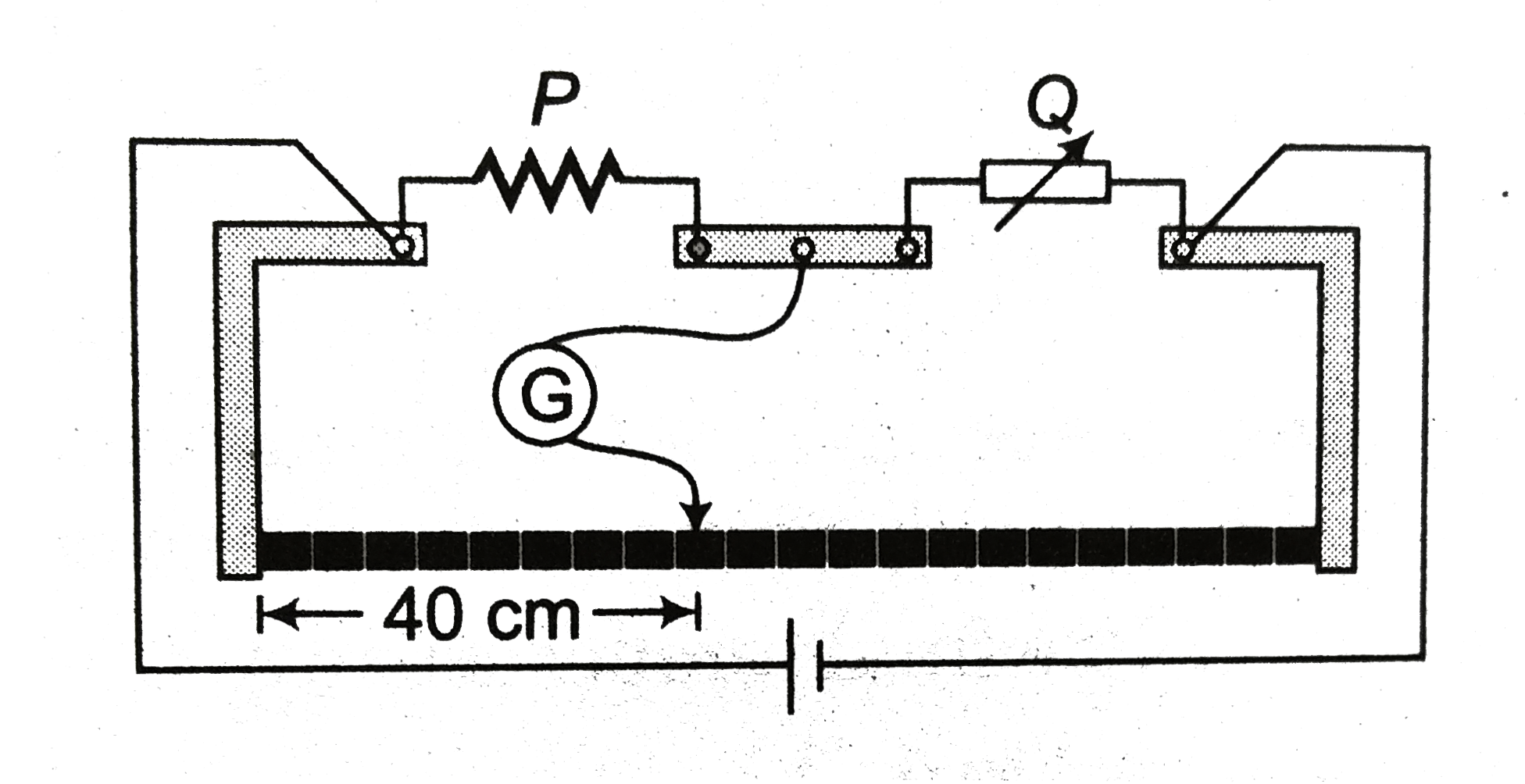Complete Solutions to Single Correct of chapter EXPERIMENTS of Class 11 book with complete answers and questions
| Class 11 | PHYSICS |
| Chapter | EXPERIMENTS |
| DC PANDEY | Single Correct |
| Number Of Questions | 33 |
| Academic Year | 2023-24 |
For positive error, the correction is.
View SolutionScrew gauge is said to have a negative error.
View SolutionVernier constant is the (One or more than one correct option may be correct )
View SolutionLeast count of screw gauge is defined as.
View SolutionIn an experiment to find focal length of a concave mirror, a graph is drawn between the magnitudes of (u) and (v). The graph looks like.
View SolutionThe graph between `(1)/(v)` and `(1)/(u)` for a concave mirror looks like.
View Solution`AB` is a wire of uniform resistance. The galvanometer `G` shows no deflection when the length `AC = 20 cm` and `CB = 80 cm`. The resistance `R` is equal to.
 .
.
View SolutionSelect the incorrect statement.
View SolutionIn the searle's experiment, after every step of loading, why should we wait for two minutes before taking the reading?( More than one options may be correct).
View SolutionIn a meter bridge set up, which of the following should be the properties of the one meter long wire?
View SolutionThe mass of a copper calorimeter is `40 g` and its specific heat in (SI) units is `4.2 xx 10^2 J^(@) C^-1kg^-1 ` The thermal capacity is.
View SolutionA graph is drawn with `(1)/(u)` along x-axis and `(1)/(v)` along the y-axis. If the intercept on the x-axis is `0.5 m^-1`, the focal length of the mirror is (in meter).
View SolutionFor a post office box, the graph of galvanometer deflection verus (R ) (resistance pulled out of resistance box) for the ratio `100.1 ` is given as shown. Find the value of unknown resistance.
 .
.
View Solution`1 cm` on the main scale of a vernier calipers is divided into `10 equal` parts. If `10` divisions of vernier coincide with `8` small divisions of main scale, then the least count of the caliper is.
View SolutionThe vernier constant of a vernier calipers is `0.001 cm`. If `49` main scale divisions coincide with `50` vernier scale divisions, then the value of `1` main scale divisions is .
View Solution`1 cm` of main scale of a vernier callipers is divided into `10` divisions. The least count of the callipers is `0.005 cm`, then the vernier scale must have.
View SolutionEach division on the main scale is `1 mm`. Which of the following vernier scales give vernier constant equal to `0.01 mm`?
View SolutionA vernier calipers having `1` main scale division `= 0.1 cm` to have a least count of `0.02 cm`.If `n` be the number of divisions on vernier scale and `m` be the length of vernier scale, then.
View SolutionThe length of a rectangular plate is measured by a meter scale and is found to be ` 10.0 cm`. Its width is measured by vernier calipers as `1.00 cm`. The least count of the meter scale and vernier calipers are `0.1 cm and 0.01 cm` respectively. Maximum permissibe error in area measurement is.
View SolutionIn the previous question, minimum possible error in area measurement can be.
View SolutionThe distance moved by the screw of a screw gauge is `2 mm` in four rotations and there are `50` divisions on its cap. When nothing is put between its jaws, `20th` divisions of circular scale coincides with reference line, and zero of linear scale is hidden from circular scale when two jaws touch each other or zero circular scale is laying above the reference line. When plate is placed between the jaws, main scale reads `2` divisions and circular scale reads `20` divisions. Thickness of plate is.
View SolutionThe end correction ( e) is `(l_(1)` = length of air column at first resonance and `l_(2)` is length of air column at second resonance).
View SolutionThe end correction of a resonance tube is `1 cm`. If shortest resonating length is `15 cm`, the next resonating length will be.
View SolutionA tuning fork of frequency `340 Hz` is excited and held above a cylindrical tube of length `120 cm`. It is slowly filled with water. The minimum height of water column required for resonance to be first heard( Velocity of sound `=340 ms^-1`) is.
View SolutionTwo unknown frequency tuning forks are used in resonance column apparatus. When only first tuning fork is excited the `1^(st)` and `2^(nd)` resonating lengths noted are `10 cm` and `30 cm` respectively. When only second tuning fork is excited `1^(st)` and `2^(nd)` resonating lengths noted are `30 cm` and `90 cm` respectively. The ratio of the frequency of the `1^(st)` to `2^(nd)` tuning fork is.
View SolutionIn an experiment to determine the specific heat of aluminium, piece of aluminimum weighing `500 g` is heated to `100 .^(@) C`. It is then quickly transferred into a copper calorimeter of mass `500 g` containing `300g` of water at `30 .^(@) C`. The final temperature of the mixture is found to be `46.8 .^(@) c` . If specific heat of copper is `0.093 cal g^-1 .^(@) C^-1`, then the specific heat aluminium is.
View SolutionWhen `0.2 kg` of brass at `100 .^(@) C` is dropped into `0.5 kg` of water at `20 .^(@) C`,the resulting temperature is `23 .^(@) C`. The specific heat of brass is.
View SolutionIn an experiment to determine the specific heat of a metal,` a 0.20 kg` block of the metal at `150 .^(@) C` is dropped in a copper calorimeter (of water equivalent `0.025 kg` containing `150 cm^3` of water at `27 .^(@) C`. The final temperature is `40.^(@) C`. The specific heat of the metal is.
View SolutionThe resistance in the left and right gaps of a balanced meter bridge are `R_(1)` and `R_(1)`. The balanced point is `50 cm`. If a resistance of `24 Omega` is connected in parallel to `R_(2)`, the balance point is `70 cm`. The value of `R_(1)` or `R_(2)` is.
View SolutionAn unknown resistance `R_(1)` is connected is series with a resistance of `10 Omega`. This combination is connected to one gap of a meter bridge, while other gap is connected to another resistance `R_(2)`. The balance point is at `50 cm` Now , when the `10 Omega` resistance is removed, the balanced point shifts to `40 cm` Then the value of `R_(1)` is.
View SolutionTwo resistances are connected in the two gaps of a meter bridge. The balance point is `20 cm` from the zero end. When a resistance `15 Omega` is connected in series with the smaller of two resistance, the null point+ shifts to `40 cm`. The smaller of the two resistance has the value.
View SolutionIn a meter bridge experiment, null point is obtained at `20 cm` from one end of the wire when resistance `X` is balanced against another resistance `Y`. If `X lt Y`, then the new position of the null point from the same end, if one decides to balance a resistance of `4 X` against `Y` will be at.
View SolutionIn a metre bridge, the gaps are closed by two resistance `P` and `Q` and the balance point is obtained at `40 cm`. When `Q` is shunted by a resistance of `10 Omega`, the balance point shifts to `50 cm`. The values of `P` and `Q` are.
 .
.
View Solution
Single Correct questions and complete solutions for chapter EXPERIMENTS of DC PANDEY ENGLISH of Class 11